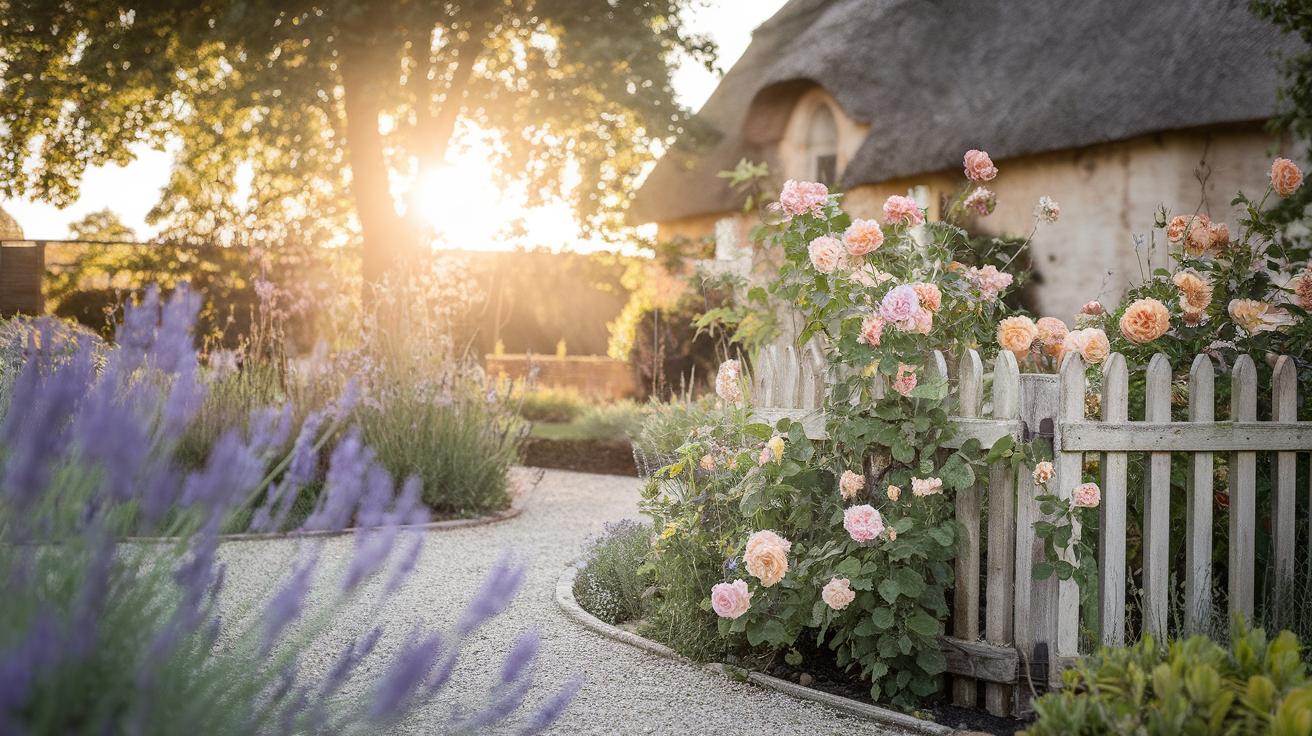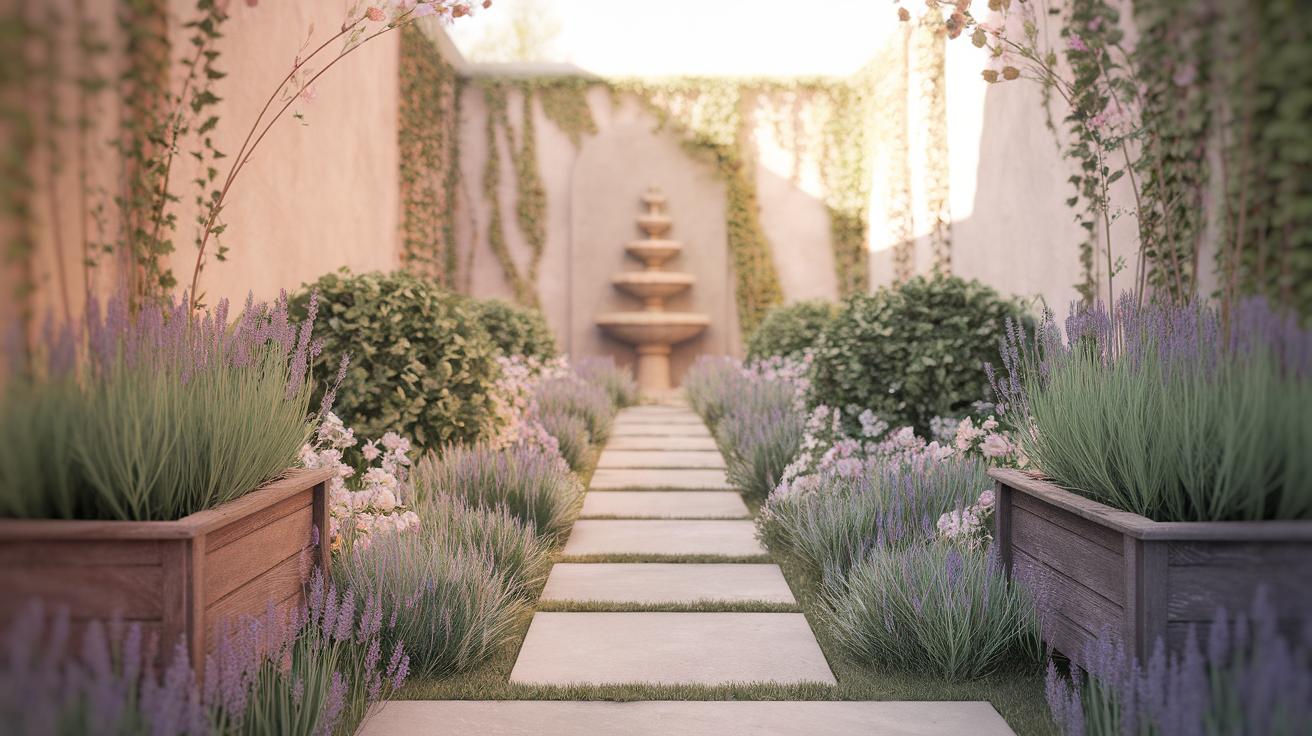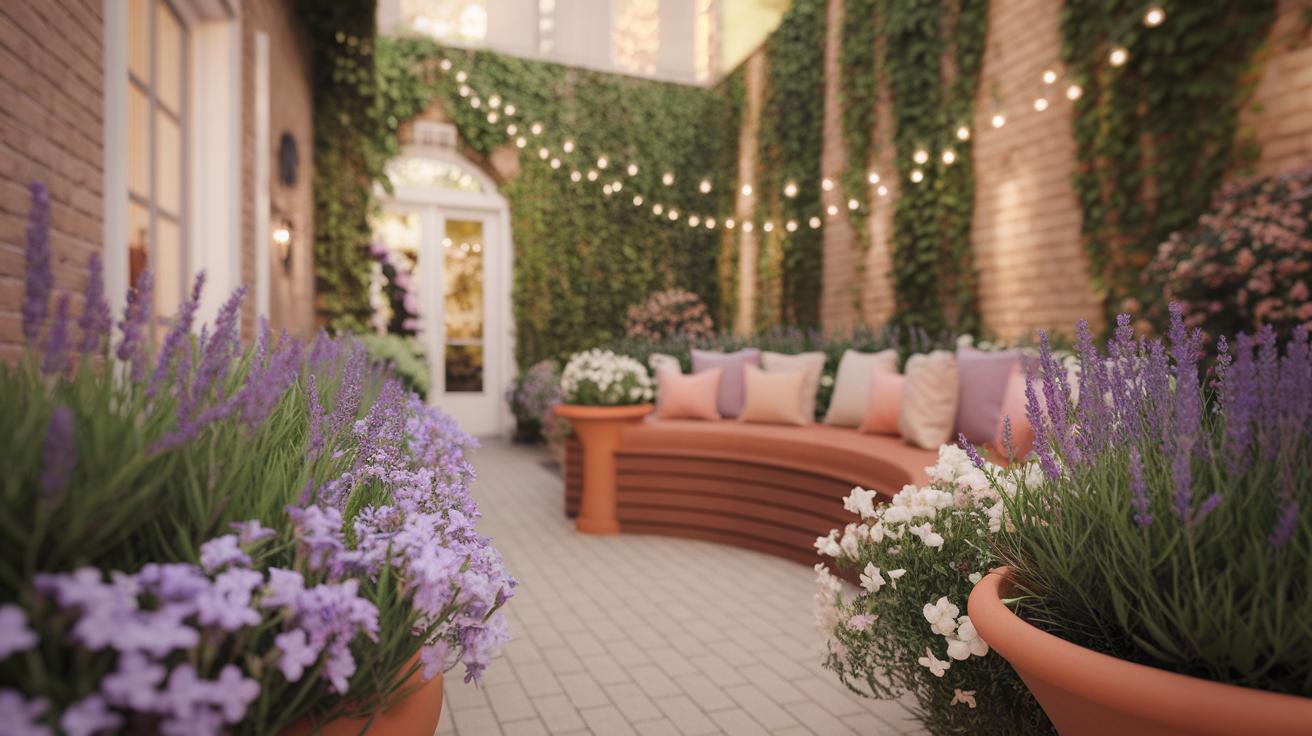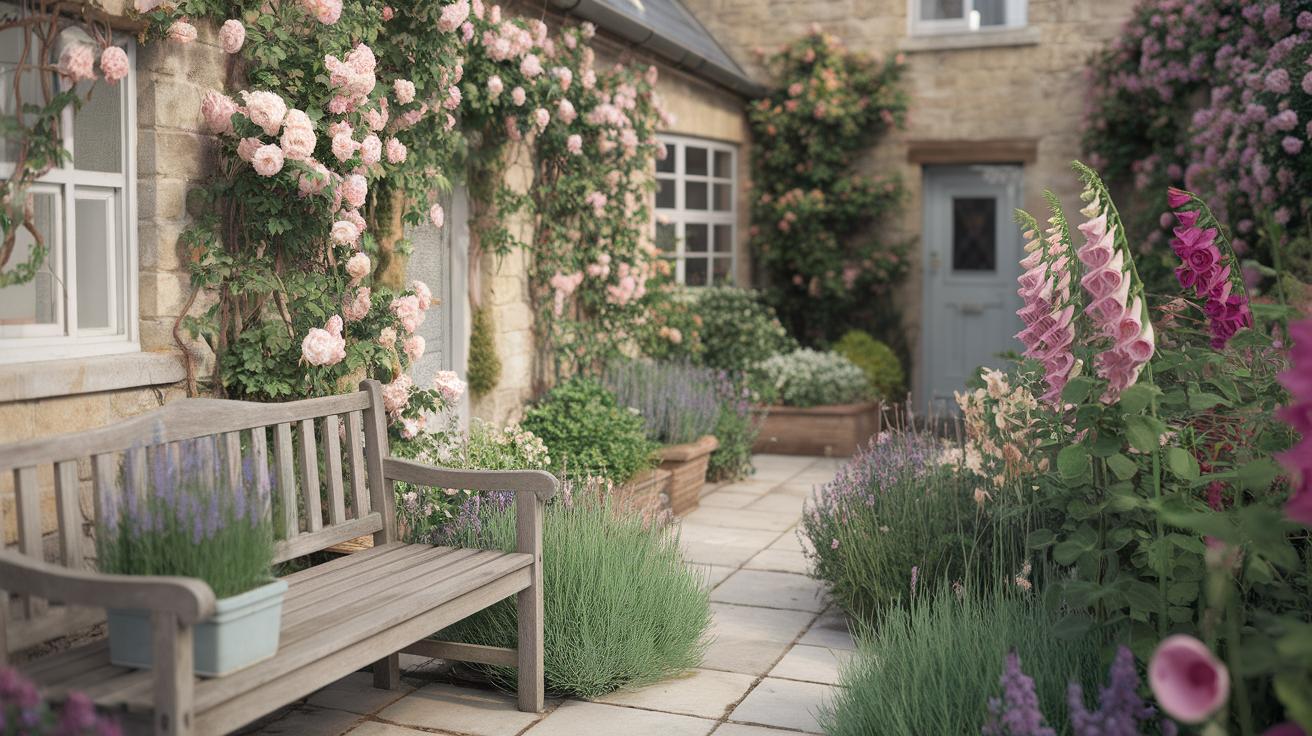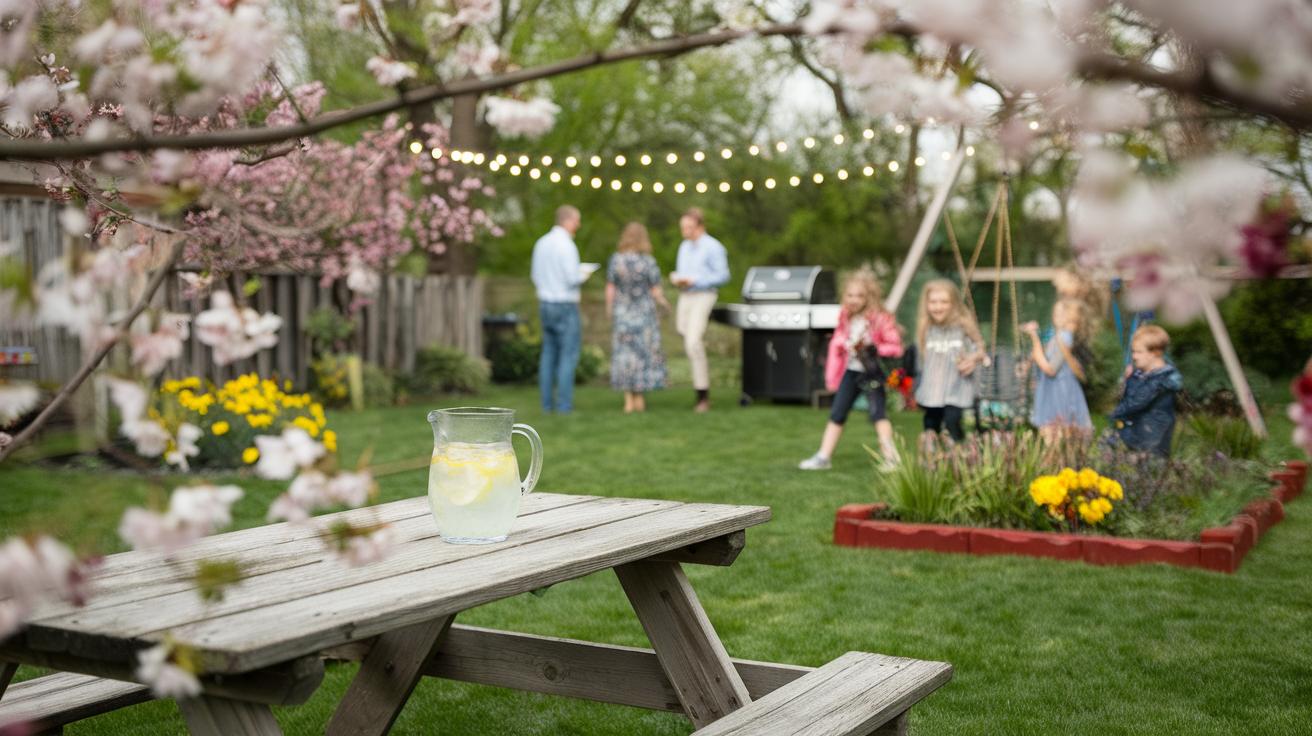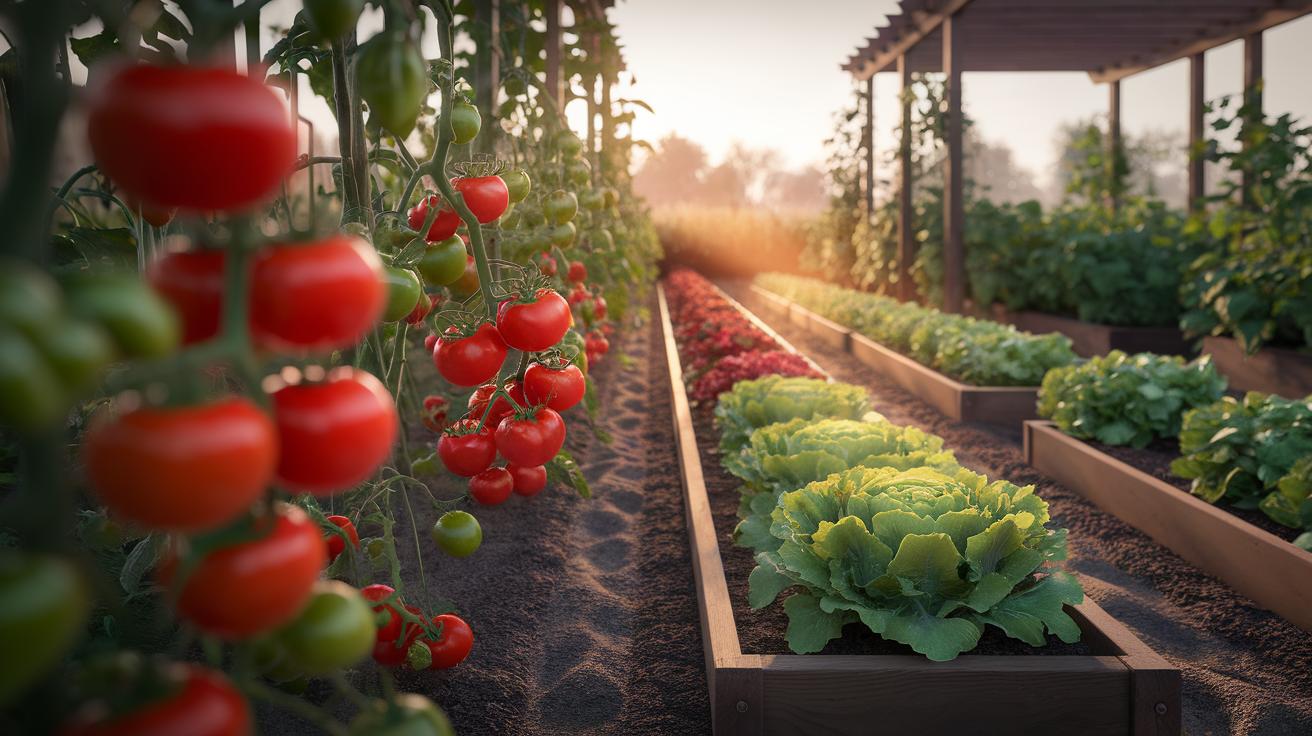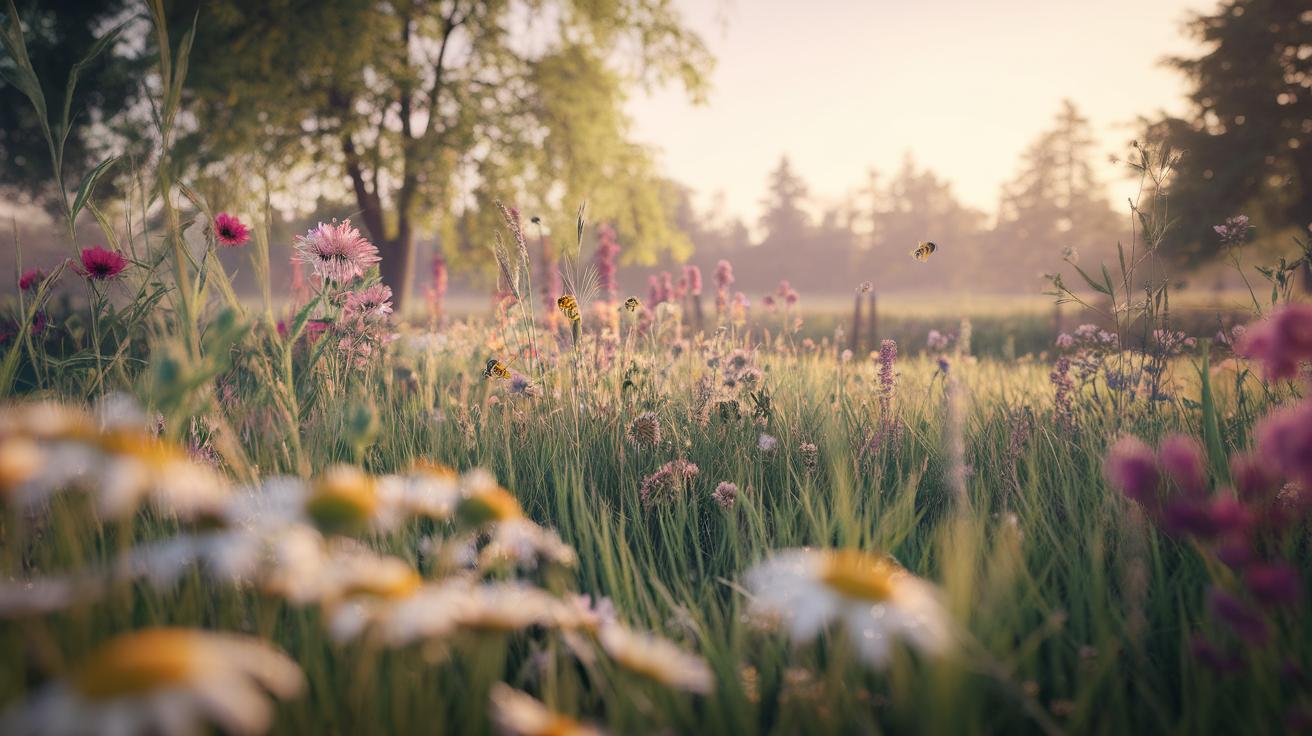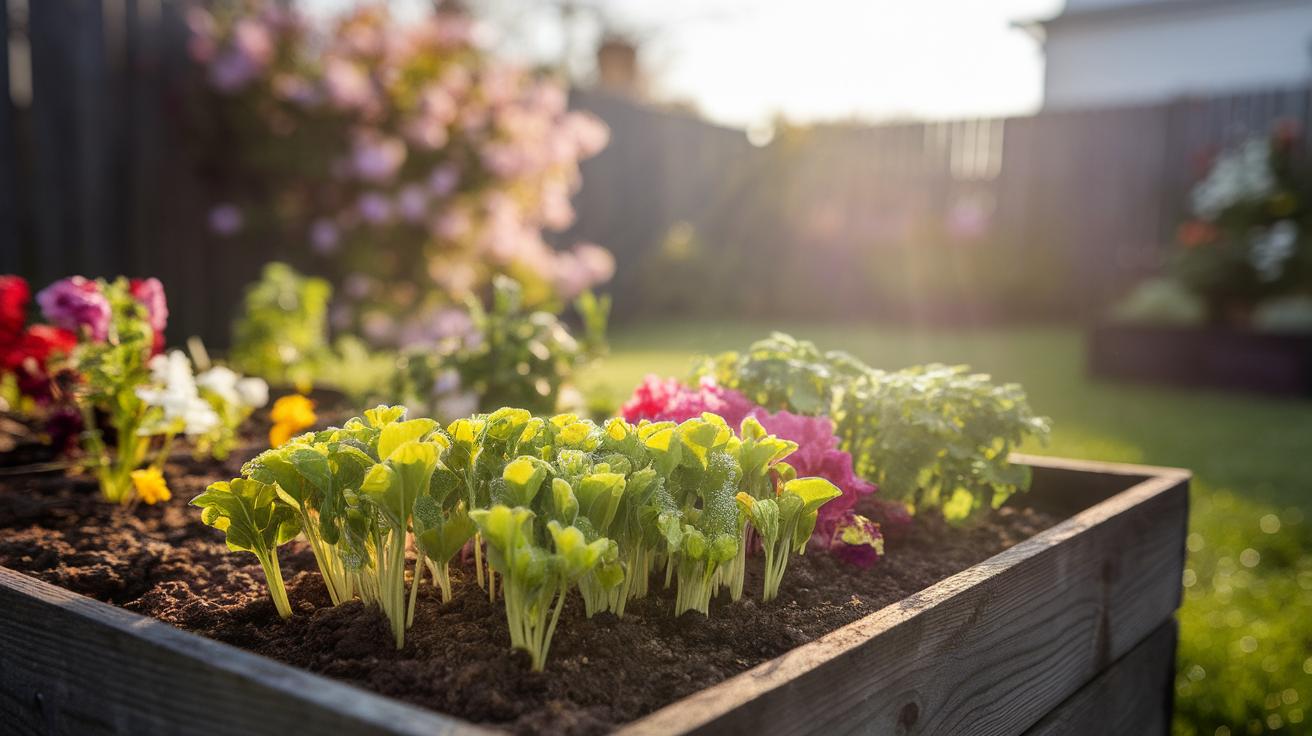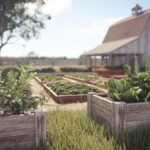Introduction
Cottage gardens offer a unique blend of practicality and charm. Originating from English countryside traditions, they stand apart with their informal layouts and dense plantings. These gardens showcase a mix of ornamental and edible plants that create a delightful space for any gardener. Their design reflects a preference for grace over grandeur, aiming to bring beauty and function together in harmony. Understanding how this garden style evolved helps appreciate its timeless appeal.
The blend of history and thoughtful design principles makes cottage gardens a favorite. They evolved from practical needs toward aesthetics, incorporating flowers and herbs with purpose and style. Whether you want to cultivate food or simply add warmth to your outdoor space, these gardens provide a versatile blueprint. This article examines key design principles and offers practical insights for you to design your own cottage garden that lasts through time.
Understanding Cottage Garden History
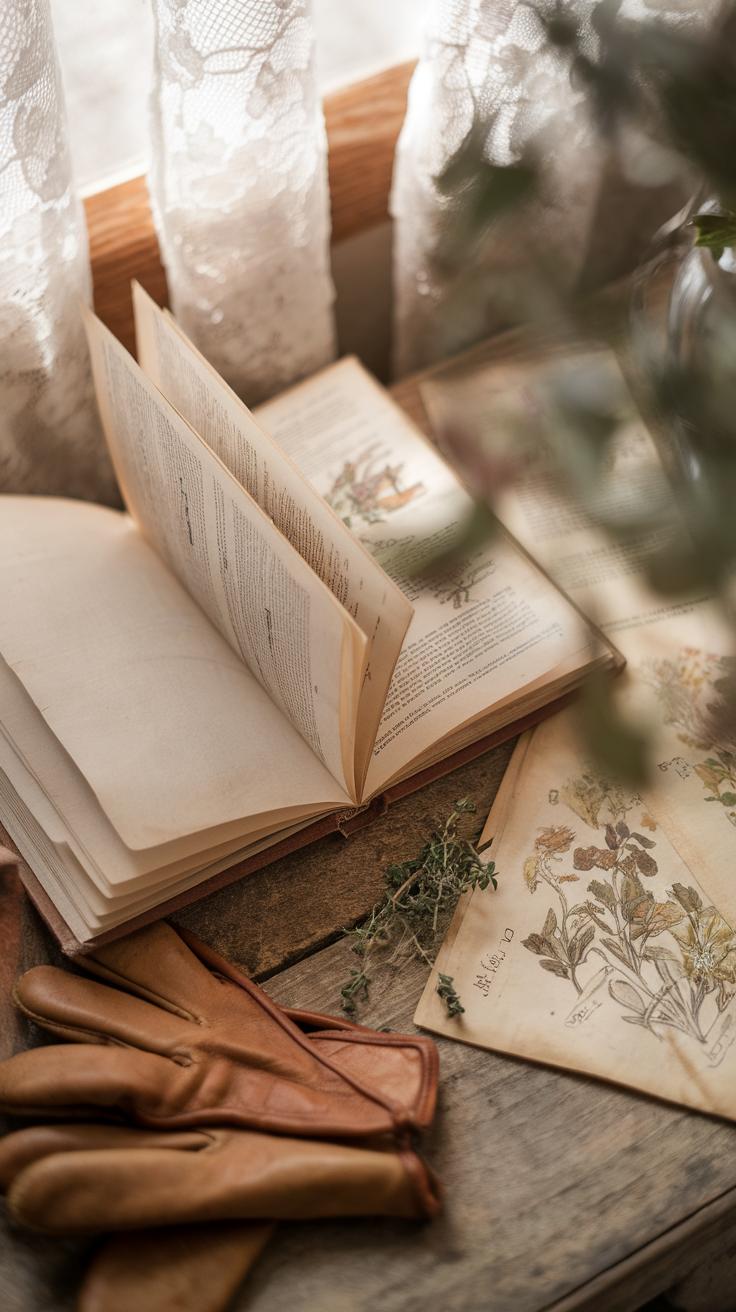
Origins and Early Purposes
Cottage gardens began during Elizabethan times as simple, practical spaces. They grew near small homes where local workers lived. These gardens served a clear purpose: to provide herbs, fruits, and vegetables needed for daily meals. The Black Death in the 14th century significantly reduced the population, leading to changes in land use and workers’ rights. Small cottages often came with garden plots, helping families grow their own food and medicinal plants. This made self-sufficiency easier. You might ask yourself how a garden can offer both food and healing at the same time. Early cottage gardens answered this by mixing useful plants in tight spaces, making the best use of limited land.
Evolution to Decorative Gardens
Over time, flowers gained importance in cottage gardens, not just for food or medicine but also for their look and household benefits. Women commonly used flowers like lavender and roses for scenting clothes and making teas. The shift came as wealthier British families began favoring less formal garden designs. These leisured classes admired the natural, relaxed style of cottage gardens. They started planting flowers alongside fruits and vegetables for decoration. The informal designs broke away from strict, geometric garden layouts. Have you considered how mixing flowers and edibles affects the atmosphere of a garden? This change turned practical spaces into charming, livable ones, keeping the garden useful without losing beauty.
Key Design Features of Cottage Gardens
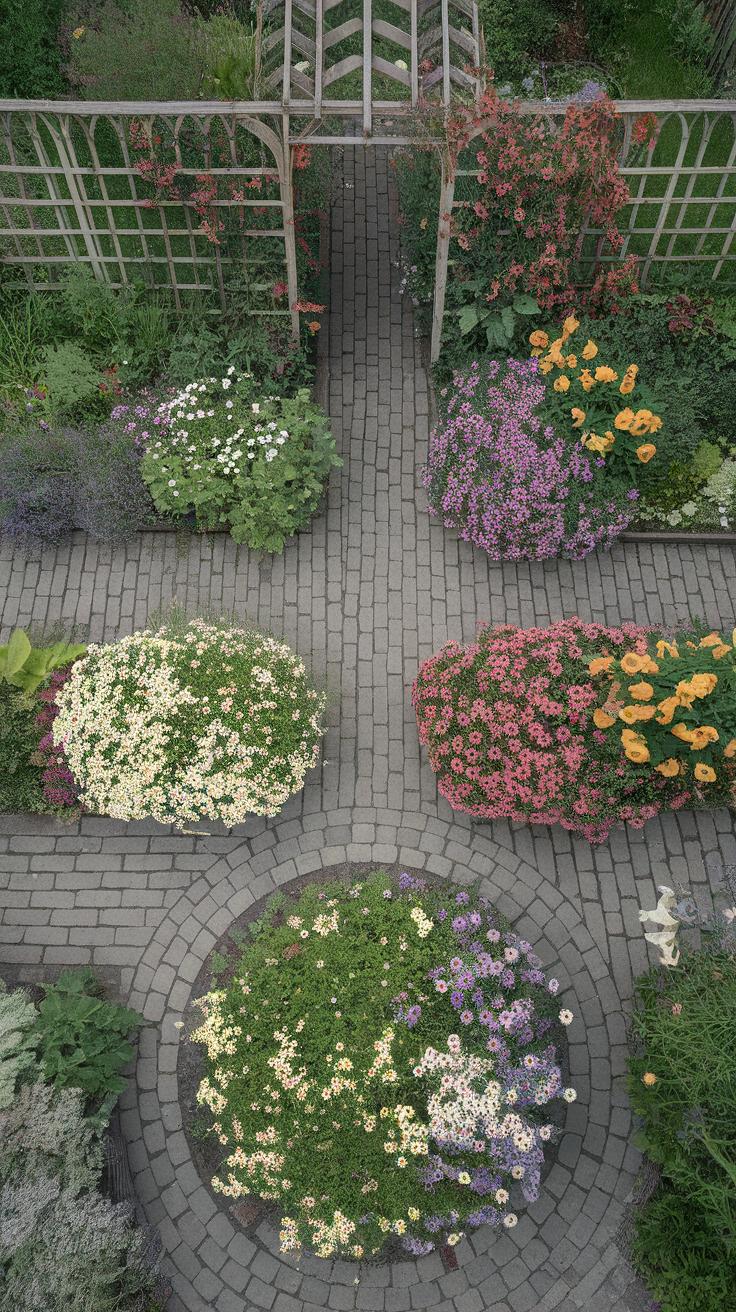
A cottage garden does not rely on rigid shapes or neat rows. Its informal layout invites you to wander along winding paths that feel natural and relaxed. These paths often curve gently, guiding you through a space full of surprises rather than strict order. Rather than empty spots, the garden is full of tightly grouped plants that seem to spill into each other. This dense planting adds richness and depth, making the space feel alive and welcoming.
Choosing a mix of ornamental and edible plants helps your garden stay both beautiful and useful. Flowers like foxgloves and hollyhocks add color and height, while herbs such as thyme and rosemary offer fragrance and flavor. Edibles like strawberries or peas tie the garden back to its roots as a working space. Each plant plays a role in making the garden both practical and inviting.
Informal Layouts and Dense Planting
Informal layouts avoid straight lines or symmetrical beds. Paths wind gently and curve, showing where you want visitors to explore without strict order. This randomness creates a feeling of ease and discovery.
Dense planting fills every space with growth. Instead of planting in neat rows, clusters of different flowers and herbs overlap each other. This keeps weeds down and encourages wildlife to visit. Dense planting also softens the edges of paths and borders, making your garden feel like part of the natural environment.
Mix of Decorative and Practical Plants
Combining decorative plants with edible and useful ones creates a balanced garden. Choose flowering plants like delphiniums or campanulas for beauty. Pair them with herbs such as chives, basil, or sage, which you can harvest for cooking. Vegetables like beans or lettuces add an extra layer of function.
Have you considered how edible plants change the look of your garden? Their leaves and flowers bring texture and color while giving you something to use. This mix keeps your garden lively throughout the year, blending charm with everyday value.
Selecting Plants for Your Cottage Garden
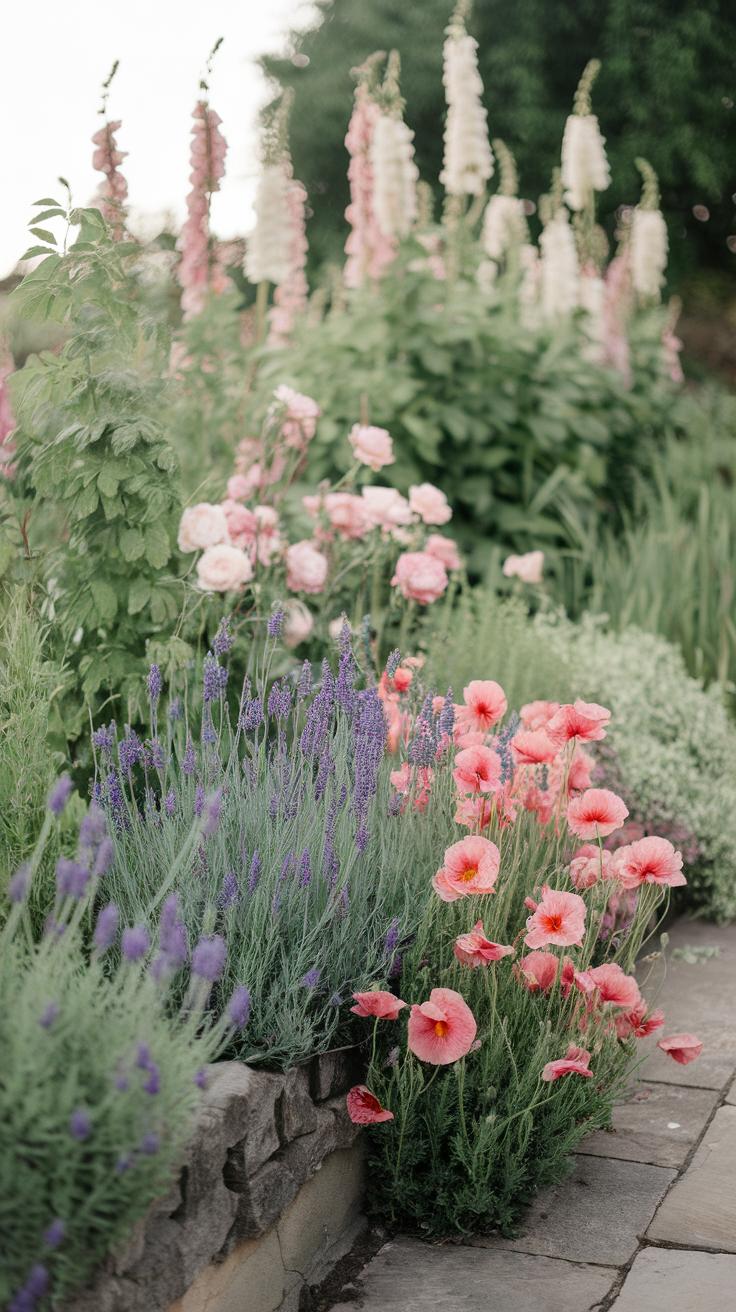
Choosing the right plants creates the heart of your cottage garden. Select blooms that carry traditional charm, like old-fashioned roses with rich scents that attract bees and butterflies. Herbs such as lavender and rosemary add fragrance and utility without extra work. Self-sowing annuals like poppies or cornflowers fill gaps naturally and return each year, saving planting time.
Focus on varieties resistant to common diseases to ensure your garden stays healthy and beautiful over time. For example, modern English roses have been bred for this quality. Easy-care plants reduce maintenance and allow you to enjoy your garden more. Ask yourself which plants will thrive in your local climate and soil.
Choosing a mix of flowering, herbaceous, and self-reseeding plants balances beauty with practicality. This combination gives your garden long-lasting color and scent without constant replanting or protection from pests.
Traditional Flowers and Climbers
Popular flowers include hollyhocks, foxgloves, and delphiniums. These tall, colorful plants bring vertical height and create a soft backdrop for lower flowers. Sweet peas and clematis climb fences, adding layers and vertical interest. Their blooms often have strong, pleasant scents that invite you closer.
Fragrance is a key part of the sensory garden experience. Stock and lavender provide scent along pathways, enhancing every walk through your space. Visual appeal also matters. Flowers with a mix of colors and forms create a lively, ever-changing garden scene. This diversity supports pollinators and adds charm without strict order.
Select plants with overlapping bloom times to keep your garden colorful from spring to fall. The combination of lush foliage, flowers, and scented climbers creates a natural, inviting atmosphere that feels full and alive.
Herbs and Edible Plants
Herbs such as thyme, sage, chamomile, and mint fit into cottage gardens beautifully. They blend with flowers and offer fresh ingredients for cooking and teas. Edibles like peas, beans, and strawberries add seasonal color and provide food straight from your yard.
Including these plants boosts your garden’s usefulness. You save trips to the store and invite wildlife that helps with pollination or pest control. Many herbs like rosemary repel unwanted insects, benefiting neighboring flowers.
Think about pairing edible plants near seating areas or paths for quick access. This makes harvesting easy and encourages using your garden in daily life. Growing both beauty and bounty in the same space keeps your garden practical without losing its classic charm.
Creating Balance with Structures and Paths
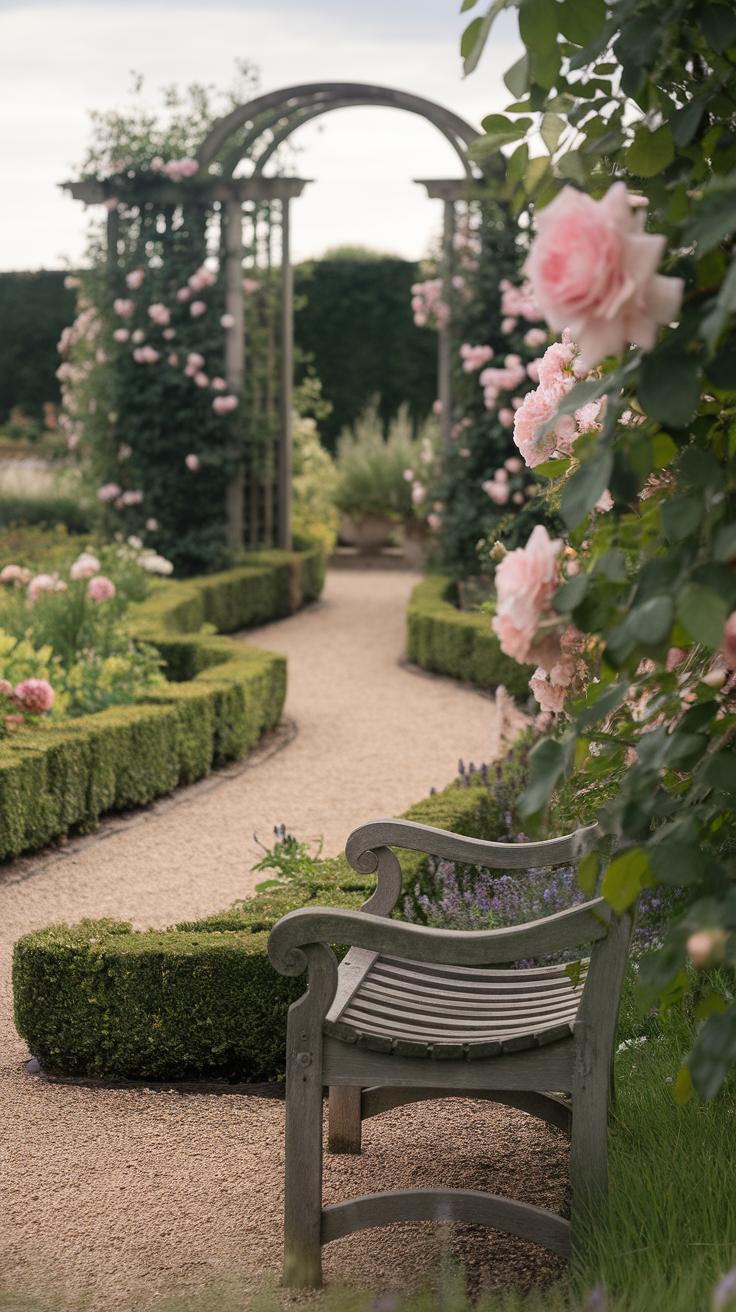
Wooden fences and trellises play a key role in shaping your cottage garden without making it look rigid. They mark boundaries softly and support plants without overpowering the green space. Using traditional wood or weathered materials keeps the garden feeling authentic and helps plants grow naturally. These elements guide your eye through the garden and give climbing plants a place to thrive.
Informal paths invite you to explore and create a natural flow through the garden. Winding walkways made from gravel, wood chips, or brick fit the cottage style perfectly. Their irregular shape breaks up the space and encourages you to discover new corners. Choosing natural materials also helps water drain and supports nearby plants. How can your garden paths lead visitors to favorite spots or secret blooms?
Rustic Fences and Trellises
Wooden fences and trellises define garden spaces without looking stiff or formal. They act like quiet dividers, letting you set areas for different plants or activities while keeping the charm alive. Climbing plants like clematis, honeysuckle, or old-fashioned roses wrap around these structures, softening their lines. This blend between build and bloom adds depth and texture. Think about what plants you want to climb and how their colors will change with the seasons.
Informal Paths for Natural Flow
Design your garden paths to feel relaxed and inviting by avoiding straight lines. Curvy, uneven paths match cottage garden spirit and encourage people to wander and notice details from different angles. Materials like crushed stone, bark, or reclaimed bricks offer practical surface options that blend well. These paths also create microclimates for nearby plants by controlling foot traffic and soil moisture. Which areas do you want your paths to connect, and how can you make each walk a fresh experience?
Maintain Your Garden with Ease
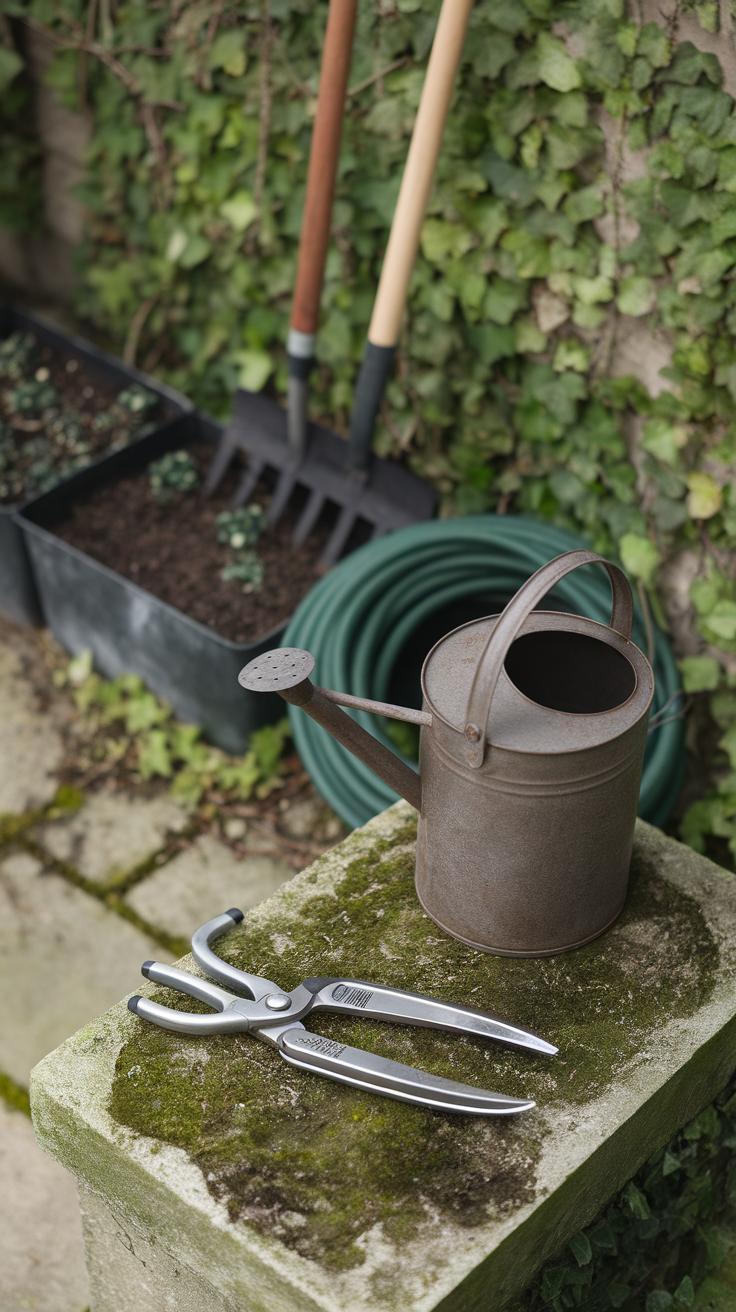
Keeping your cottage garden beautiful doesn’t have to mean hours of work every day. Focus on plants that can handle common challenges like pests and changing weather. These strong plants reduce the time you spend on watering, pruning, or treating diseases. Think about how much more you could enjoy your garden if upkeep felt simple and straightforward.
Design your space to support easy care. Group plants with similar needs and allow room for growth without crowding. Paths should give quick access without damaging roots. Creating a layout that makes watering and cutting back easier helps you maintain your garden calmly.
Choose plants that grow back year after year or drop seeds on their own. They fill in gaps naturally and keep your garden lively without extra planting each season. How often do you want to replant? Self-sowing plants and spreading perennials make the garden shift and grow with little effort from you.
Choosing Low-Maintenance Varieties
Select plants known for resisting diseases to save time on treatments. For example, lavender and sedum tolerate drought and pests, so they ask less from you. Look for varieties labeled “disease resistant” or “low care” at your nursery.
Plants like columbine and foxglove require little trimming and bounce back each year. If you have limited time, these choices keep your garden healthy without constant attention. Think about your schedule and pick plants that match the time you can give.
Set yourself up for success by choosing shrubs and flowers that thrive in your climate and soil. This reduces extra work and helps your garden look better for longer.
Using Self-Sowing and Perennial Plants
Self-seeding annuals, such as calendula or nigella, drop seeds that grow in new spots with no need to replant. This creates a changing but consistent display from year to year. You don’t have to start from scratch each spring.
Perennials like coneflowers and catmint spread gradually, filling bare spots over time. They give your garden a full look without much replanting. Their roots also improve soil health and stability.
Adding these plants means less work but continuous change. You can relax, knowing your garden will fill out and surprise you without constant planting. How would it feel to have a garden that evolves by itself, yet stays full all season?
Using Your Cottage Garden YearRound
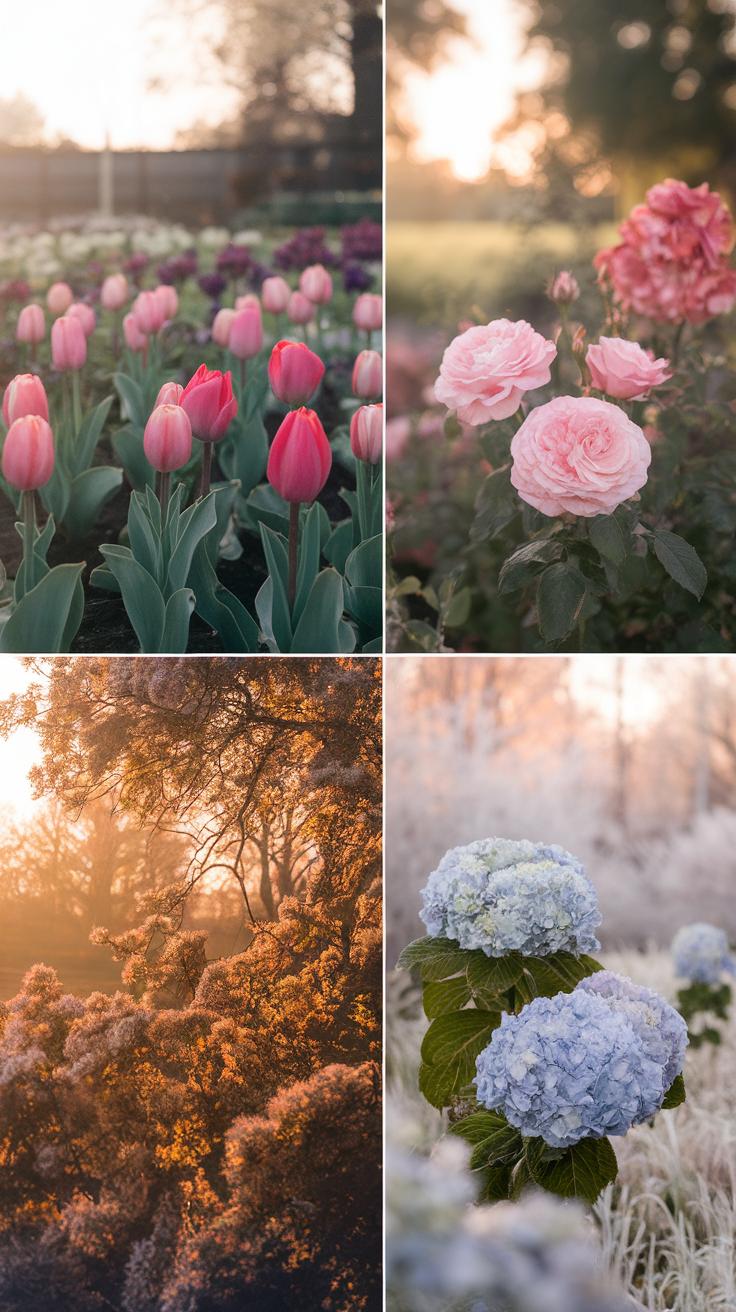
Design your garden to offer something for every season. Think about which plants bloom at different times and include vegetables or herbs you can harvest throughout the year. Choose a mix of early spring bulbs, summer perennials, and late-season crops to keep your garden active and interesting.
Consider edible plants alongside flowers. Early peas and lettuces can be planted in cool months, while tomatoes and beans thrive in summer. In fall, plant kale or spinach for a fresh harvest when other plants fade.
Your garden should also have structural elements that hold up through winter. Paths, trellises, and raised beds add function even when flowers are gone. This way, your space stays useful and inviting whatever the month.
Are you planning how to enjoy your garden each season? Thoughtful choices keep your cottage garden both beautiful and practical all year long.
Seasonal Planting Plans
Set up your garden with staggered blooms by planting a variety of species suited to each season. Early spring flowers like crocuses and tulips open the year’s colors quickly. Follow with summer favorites such as foxgloves and hollyhocks that add height and charm.
Late bloomers like asters and chrysanthemums bring color in fall. For vegetables, sow carrots and spinach in early spring, then tomatoes and peppers in summer. In fall, plant garlic and onions for next year’s harvest.
Use a planting calendar to plan. Think about bloom time, harvest dates, and when to start seeds indoors. This approach guarantees fresh flowers or food throughout the year without gaps.
Visual Interest in Winter and Fall
Keep your garden alive with plants that show structure after leaves fall. Evergreens such as boxwood, yew, or holly provide green hues and form. Trees like dogwood have striking red stems to brighten dull winter days.
Include perennials with interesting seed heads like echinacea or sedum. Their shapes catch light and add texture even when flowers are gone. Grasses can also bring movement and softness in cold months.
Think about adding winter-flowering shrubs like witch hazel or hellebores. These ensure color and life. How can you arrange your garden so it stays attractive even when most plants rest?
Incorporating Wildlife and Sustainability

Cottage gardens create natural habitats that support local wildlife by offering both food and shelter.
You can choose plants that produce nectar, seeds, and berries to attract birds, bees, and butterflies. Native plants or those well-suited to your area usually need less water and care while supporting the local ecosystem. For example, planting milkweed helps monarch butterflies complete their life cycle.
Think about how your garden becomes a living space for different creatures. How can you adjust your plant selection or layout to provide shelter or nesting spots? Using natural materials like wood piles or stone piles can create homes for insects and small animals, increasing biodiversity.
Sustainability means working with nature, not against it. Selecting the right plants and providing food sources helps your garden last longer while supporting the environment around it.
Supporting Pollinators and Beneficial Insects
Diverse plantings attract more pollinators such as bees and butterflies. They need a variety of flowering plants throughout the seasons for food.
Try including plants like lavender, foxglove, and echinacea, which are favorites for many pollinators. Herbs like thyme and rosemary also attract helpful insects that control pests naturally.
Think about which flowers bloom at different times. Can you arrange your garden so something is always flowering? This continuous supply helps pollinators thrive and improves your garden’s health.
You can observe the insects that visit and add more plants they prefer. Are there signs of butterflies or bees in your garden now? What could encourage more?
Sustainable Gardening Practices
You can reduce water use by installing drip irrigation or watering early in the morning when less water evaporates.
Composting garden waste like fallen leaves and plant cuttings turns it into rich soil that nourishes your plants without chemical fertilizers. It also reduces trash going to landfills.
Avoid harsh chemicals like synthetic pesticides and herbicides. They harm beneficial insects and can accumulate in the soil. Instead, use natural options like neem oil or encourage pest predators such as ladybugs.
Ask yourself: How can you care for your garden in a way that protects the soil, water, and the creatures around you? Using these methods supports a healthy garden now and in the future.
Personalizing and Expanding Your Cottage Garden
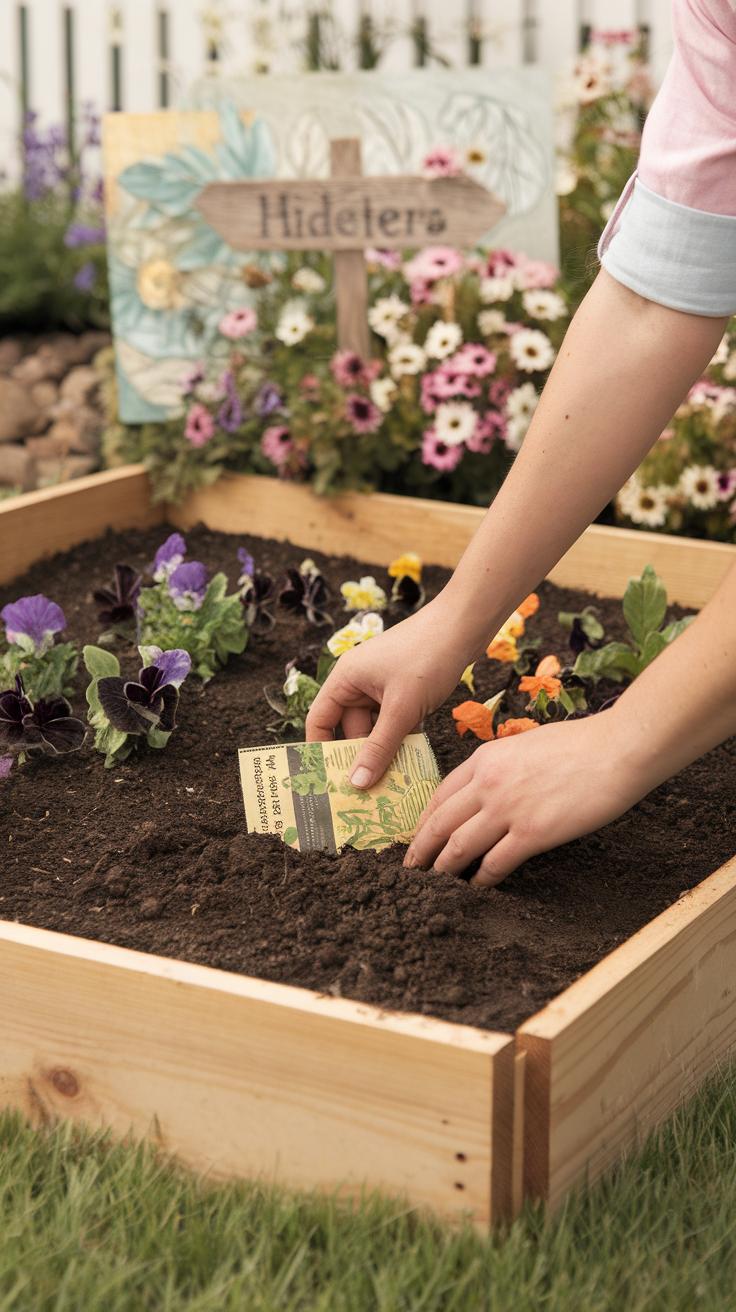
Tailoring Plant Choices and Layout
Your cottage garden should feel like a reflection of your style and daily needs. Pick plants that suit your climate and how much time you want to spend caring for them. Choose flowers, herbs, or vegetables that you enjoy and that make you happy to be outside. Arrange plants to create cozy spots where you can relax or have family time. You might add a bench, a small fountain, or even a trellis for climbing roses. If you love color, select a mix of blooms that suit your personality—from soft pastels to bright hues. Think about how you use your garden now and what features could improve that experience. Which plants or layouts match both your taste and lifestyle? Small details and personal touches help create a garden that feels uniquely yours.
Planning for Garden Growth and Change
Expanding your cottage garden bit by bit helps keep the design balanced and enjoyable. Start with a manageable size and add new elements as you learn what works best. You could plant a new border, add a vegetable patch, or build a small shed over time. Gardens change with the seasons and years, so stay open to adjusting your plans. Some plants grow bigger than expected, while others might not thrive. Experiment with new combinations and layouts, observing what fits your space and climate. How can you add interest without overcrowding? Offering room for growth ensures your garden stays functional and attractive. Think about your garden as a place that changes with you, adapting to new interests and needs.
Conclusions
Applying cottage garden design principles means focusing on simplicity and functionality combined with natural beauty. Choosing the right mix of plants and materials creates an inviting space that suits your lifestyle. Dense planting and traditional structures can complement your home’s character while supporting wildlife and sustainability. Your garden will thrive as a reflection of personal care and thoughtful planning.
With these insights, your cottage garden can be both practical and beautiful. The value lies in balancing food production with floral charm, using easy-to-maintain plants and materials that endure. You now have the knowledge to start your garden and adapt it over time. A successful garden grows with you, becoming a lasting feature of your home environment.


